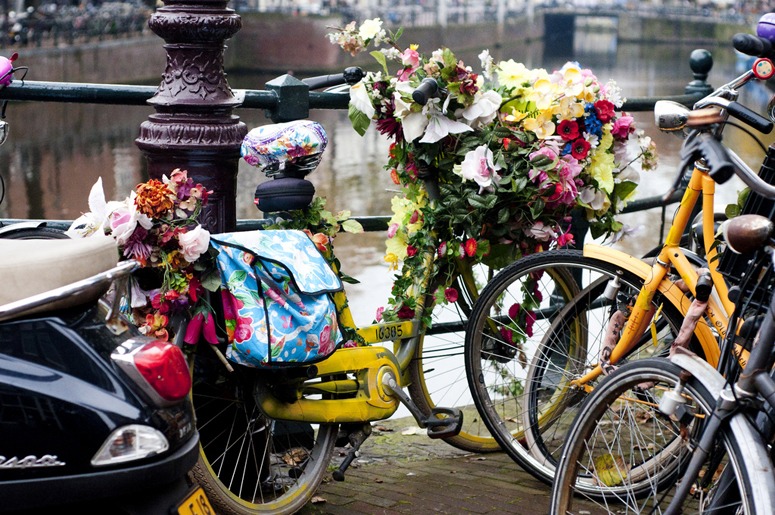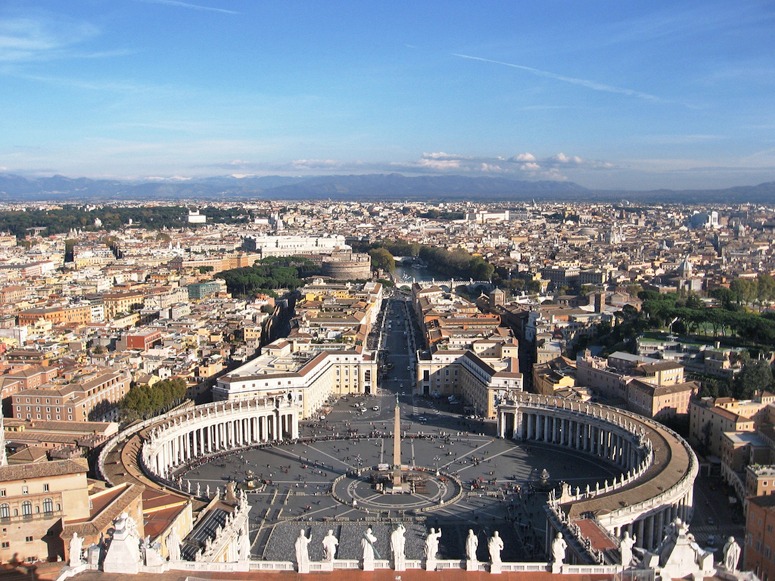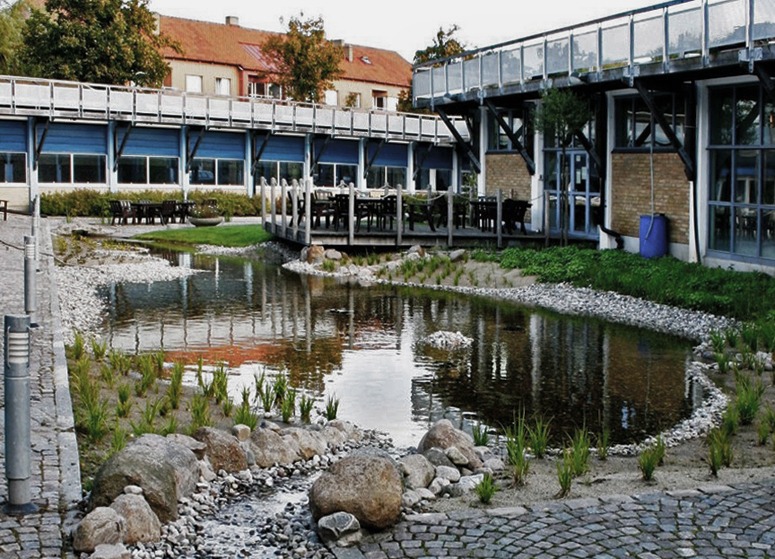I admire the Public for Public Space and I like this video, even if it is too long. Also, I mostly agree with the criticisms of landscape architects and the other design professions. What I regret about the film is the detachment from design theory.
Fred Kent’s answer to the question ‘What Makes a Great Place?’ is (1) sociability (2) uses and activities (3) comfort and image (4) access & linkage. It is not wrong but it is muddled. Fred Kent should have begun with Vitruvius and had he done this the list might have been re-organized as follows (1) commodity: uses, activities, sociability and comfort (2) FIRMNESS: construction and planting supporting a healthy ecosystem, with access and linkage for humans and other species (3) DELIGHT, or, as Vitruvius put it VENUSTAS – his word extends to all the aesthetic qualities associated with Venus, rather than the marketing-mens’ word ‘image’.
Some acquaintance with design history might also have yielded the fact that Lancelot ‘Capability’ Brown described himself as a Place Maker.
Category Archives: Urban Design
Should urban design start with architecture, landscape, infrastructure – or music?
The highwaymen seem to have won so that modern (or should it be Modernist?) urban design begins with the layout of roads. The gaps are then filled with blocks and the SLOAP is slurped with slabs and shrubs (SLOAP = Space Left Over After Planning). This is how Concrete Jungles are made. ‘Ugh’. So let’s demote the highwaymen and then think about how to design cities which will be more than assembles of Big Boxes and Little Boxes beside roads (see video below).
Should we launch our urban designs with music, architecture, landscape, planning or infrastructure? Music can set the mood for a design. We can remember the example of the Greenwich landscape architecture urban design project 2011. And we can look back to the example of St Clement Danes (see video above). The original church, built by Danish imigrants, stood between the cities of London and Westminster – possibly near trees, as today. James Gibbs designed the tower – and the music it was to produce was surely the starting point for his design, reminding us that form can follow function without being its slave.
Yet what is the function of a city? Is it to help its citizens lead good lives: healthy, comfortable, safe, sustainable and beautifully inspiring. If so, we cannot expect good cities to result from starting with the design of roads. But where should the urban design process begin: planning, architecture, landscape architecture, green infrastructure, grey infrastructure? You might say ‘start with urban design’ but it has proved too broad a discipline for the training of professionals at first degree level – and also problematic at masters level.
Cycle planning in London – landscape architects should help
 Great to see cycling as an issue in the election for a London Mayor and, since it is safer to judge politicians by what they do than by what they say, I will vote for the re-election of Boris Johnson. I have SEEN him cycling to work in London. Ken Livingstone says a bit about cycling but, during his years as Mayor, I SAW no significant improvements – and nor did I hear of him riding a bike.
Great to see cycling as an issue in the election for a London Mayor and, since it is safer to judge politicians by what they do than by what they say, I will vote for the re-election of Boris Johnson. I have SEEN him cycling to work in London. Ken Livingstone says a bit about cycling but, during his years as Mayor, I SAW no significant improvements – and nor did I hear of him riding a bike.
To ride with the election, the London Cycling Campaign is running a ‘Love London, Go Dutch’ campaign. The LCC points out that in the 1970s, cycling was not much more popular in Amsterdam than in London. Today, 3% of London journeys are made by bike (this includes 90% of my journeys!) and 47% of Amsterdam journeys are made by bike (figures from Evening Standard 26.4.2012). The cycle park at Zuid Station holds 2500 bikes and parking is free for the first 24 hours. TfL has a cycle park at London Bridge Station which holds 400 bikes and costs £1.50/day. I would like to see landscape architects taking an active role in London Cycle Planning and Design. Those ugly Barclays cycle ‘superhighways’ should be replaced by beautifully designed leafy and flowery routes. This will cost money – and the Landscape Institute should be a very-active campaigner for safe, convenient and enjoyable cycle lanes. It would not surprise me if 50% of landscape architects cycle to work in London – so they can be trusted to produce good designs.
Image courtesy MaWá
What are the conditions for good urban landscape design?

Edmund Bacon, in his 1974 book on Design of Cities, interpreted Rome's spatial plan in essentially geometrical terms (an axial movement system). Historically, it was created WITH temporal and spiritual power to symbolise these qualities. Are they still the necessary conditions for good urban design? No living planner or designer has the 'powers' of Sixtus V and Urban VIII. Is this why we are making such disappointing cities?
What are the social, political and economic conditions in which urban landscape design is most likely to flourish? I very much hope my answer to this question is wrong, but here goes: “in cities where an enlightened king was guided by spiritual beliefs”. Why should this be so? (1) Without temporal power, urban design is scarcely possible. (2) without spiritual power, objectives are likely to be short term and non-idealistic (3) short-term commercial and military objectives benefit rulers and disadvantage peoples. As Alexander Solzhenitsyn observed “Is it not true that professional politicians are boils on the neck of society that prevent it from turning its head and moving its arms?”. “It is not victory that is precious but defeat. Victories are good for governments, whereas defeats are good for the people. After a victory, new victories are sought, while after a defeat one longs for freedom, and usually attains it. Nations need defeats just as individuals need suffering and misfortunes, which deepen the inner life and elevate the spirit.” The great urban designs were made in periods of faith and monarchy Beijing from 1293-1912, in Isfahan under Shah Jehan, in Rome under the Popes and in Paris under the kings and emperors. What comparable successes can be claimed by the faithless democracies and autocracies of the twentieth century? The great powers of the modern world suffer from not having been defeated in great wars.
Image courtesy RTSS
MOER Green roofs: history, classification and naming
This blog has often discussed green roofs and green roof typologies but they always need more consideration:
Green roofs c3500BC
Turf was the standard roofing material in Neolithic North Europe. You can still see this roofing technique in Norway and Iceland
Roof garden c1000BC
The most famous elevated garden in history, the Hanging Gardens of Babylon, may not have been on a roof. Nothing is known about the construction and they may have been ‘hanging’ on an embankment rather then a roof. But they were definitely used as a garden and the only illustration of this type of space is a carved tablet in the British Museum. This was a place for fruits and flowers and a place to walk in the cool of the evening
Roof gardens in the twentieth century
Cities were becoming much denser and much higher-rise, so people began making modern roof gardens. Corbusier proposed one in Paris and the landscape architect, Ralph Hancock, designed one for Derry and Toms, now called the Kensington Roof Garden
Green roofs in the twentieth century
People began to remember that ‘green stuff’ could also serve as a roof-covering material and then found many reasons for reviving the idea: water conservation, biodiversity, acoustics, insulation etc. This led to the making of what are called ‘extensive’ green roofs and, by way of contrast, roof ‘gardens’ came to be called ‘extensive’ green roofs. I think the terminology began in Germany.
Moer Roofs in the twenty-first century
The City of Malmö and the Scandinavian Green Roof institute established a 9000m3 green roof which is called the Augustenborg Botanical Roof Garden. It is a good project and, though the name suggests ‘a botanical garden on a roof’, the design objectives of the Malmö roof are broad: ‘environmental, economical, and to improve storm water management, health and aesthetics in our communities’. This type of roof needs a new name and we could base it on MOER technology: Multi-Objective Environmental Roofing (pronounced as ‘mower’, for irony). The roles of a broad spectrum Moer Roof would include: social use, aesthetic use, food production use (including aquaponics), water conservation, biodiversity, acoustics, insulation, energy generation, sustainability etc. The SGRA has a useful classification of green roof advantages and design objectives
Image courtesy i-sustain
Space and place
Famous Danish Urbanist Jan Gehl after a nine month study of central Sydney in 2007 called for the addition of three new public squares along George Street:
“His report paints a picture of a city at war with itself – car against pedestrian, high-rise against public space. “The inevitable result is public space with an absence of public life,” he concludes.
His nine-month investigation found a city in distress. A walk down Market Street involved as much waiting at traffic lights as it did walking. In winter, 39 per cent of people in the city spend their lunchtimes underground, put off by a hostile environment at street level: noise, traffic, wind, a lack of sunlight and too few options for eating.”
If the City of Sydney was to implement his vision how would the addition of public space improve the perception of place in Sydney?
The City of Miami is also feeling the lack of a public centre. In considering the attributes of good public squares they describe a few of the most successful spaces in the US, including Union Square and Madison Square.
Feel free to nominate your favourite public square and tell us why it is so good!


